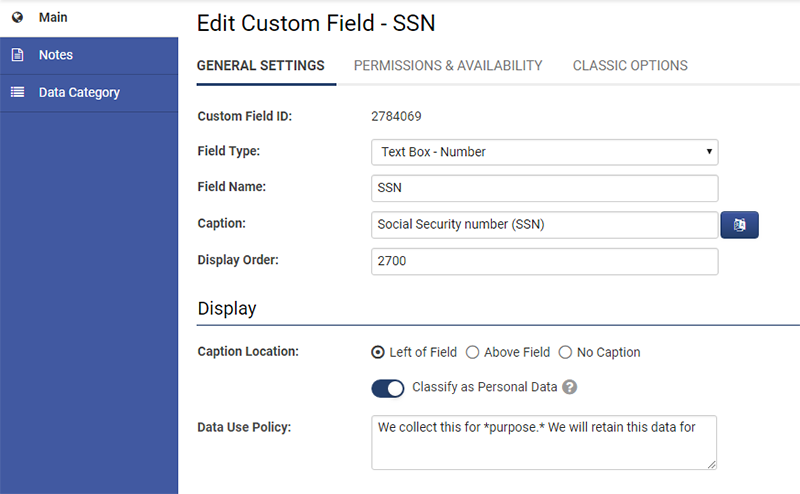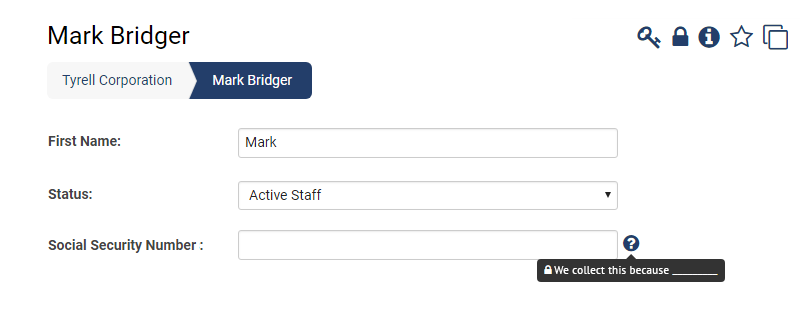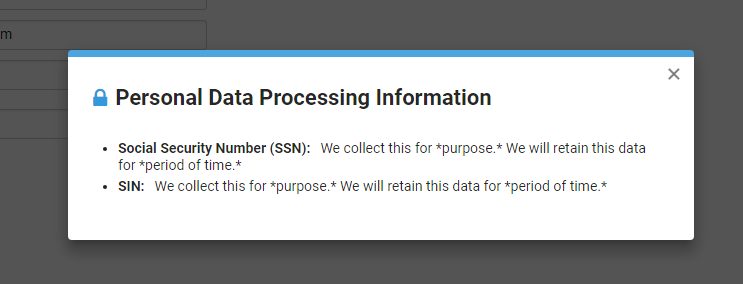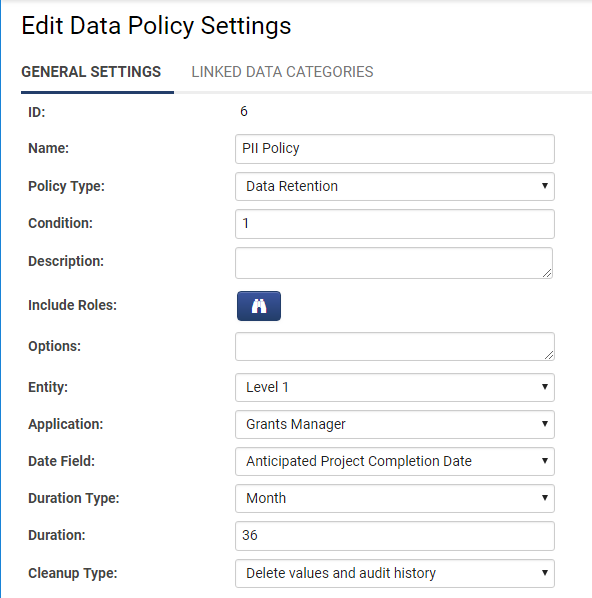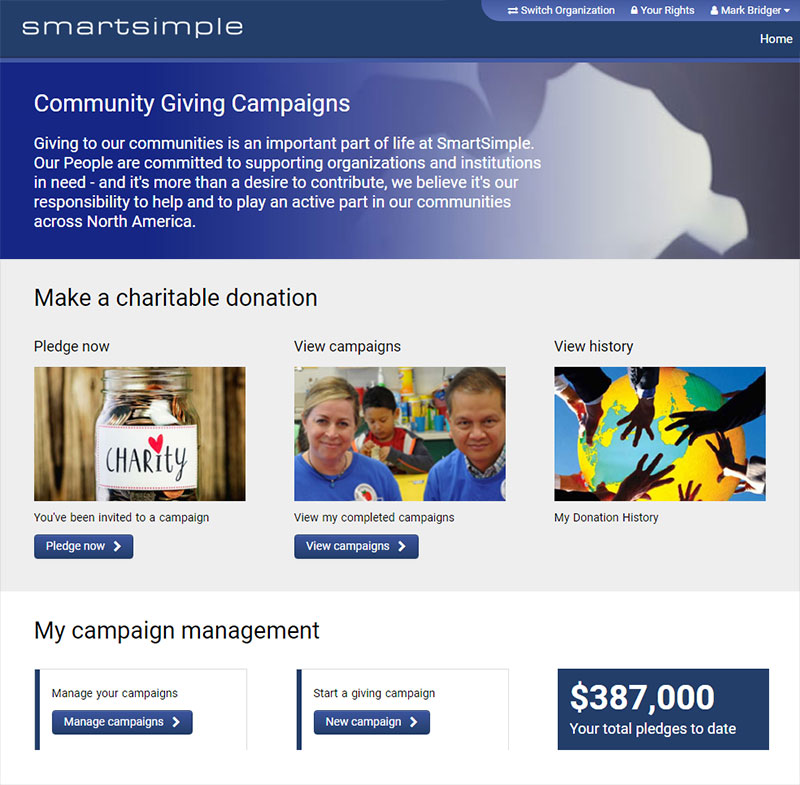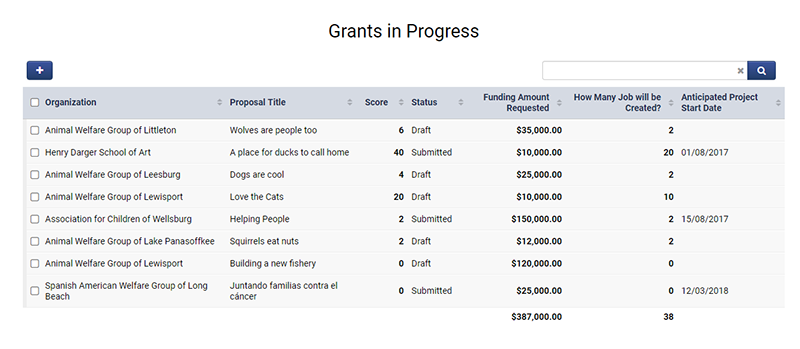Upgrades
Contents
General Information
Next Upgrade Date
The next upgrade is scheduled for July 20 2023.
Upgrade Schedule
| Upgrade | Key Release Date | Global Release Date |
| February 2025 | Thu, Feb 13 2025 | Thu, Feb 27 2025 |
| June 2025 | Thu, Jun 12 2025 | Thu, Jun 26 2025 |
| October 2025 | Thu, Oct 9 2025 | Thu, Oct 23 2025 |
| February 2026 | Thu, Feb 12 2026 | Thu, Feb 26 2026 |
| June 2026 | Thu, Jun 11 2026 | Thu, Jun 25 2026 |
| October 2026 | Thu, Oct 8 2026 | Thu, Oct 22 2026 |
We regularly update the list of upgrade features and schedule for both the backup and production environments on this Wiki page.
This page will provide a general overview of each upgrade, with links to the Wiki articles describing the new or updated features and how to use them. You can also subscribe to the Technical Journal that is sent out prior to each upgrade on the Newsletter Signup Page. (Unsubscribe here).
System Upgrade Process
The objective of the System Upgrade Process is to ensure that customers have a chance to review, without compromising the integrity of their production system, how their applications and information will work following the upgrade. In order to take advantage of this you will need to know how to access your backup instance of SmartSimple. If you need assistance with this either refer to the Backup Server and Testing Instances Wiki article, or contact the SmartSimple support desk.
For clients on a Private Cloud enviornment, please review the SmartSimple Upgrade Process – Dedicated Server page.
Upgrade Schedule Details
The following tables outline the detailed upgrade release cycle.
If you are part of our Key Release your SmartSimple Cloud system will be automatically upgraded according to the following schedule. Generally North American Clients are on the Key release.
| Hosting | Environment | Date | Maintenance Window | Typical Downtime |
| Key Release | Production | Second Thursday of an upgrade month | 22:00 - 23:59 EST | 5 minutes |
| Key Release | Backup | Two weeks prior to the production upgrade | 22:00 - 23:59 EST | 5 minutes |
If you are part of our Global Release your SmartSimple Cloud system will be automatically upgraded according to the following schedule. Generally clients in Europe, Middle East and Asia as well as Managed Dedicated clients are on the Global release.
| Hosting | Environment | Date | Maintenance Window | Typical Downtime |
| Global Release | Production | Fourth Thursday of an upgrade month | 22:00 - 23:59 local time | 5 minutes |
| Global Release | Development/Test | Fourth Thursday of an upgrade month | 22:00 - 23:59 local time | 5 minutes |
| Global Release | Backup | Second Thursday of an upgrade month | 22:00 - 23:59 local time | 5 minutes |
If you are on dedicated environment that is client-managed your SmartSimple Cloud system is only upgraded manually by your system administrator or by submitting a request to SmartSimple. The upgrade package is made available for you according to the following schedule.
| Hosting | Environment | Date | Maintenance Window | Typical Downtime |
| Global Release | All | Fourth Thursday of an upgrade month | client-managed | 5 minutes |
Backup Environment Update
- Each backup environment will be updated to the "release candidate" prior to the upgrade date.
- This update will provide for instance specific testing of release candidate, as you can log into your respective backup environment and test the changes against your most current data and configuration.
- Internal staff will also be using these environments to perform instance specific testing.
Update Go/No-Go
- Subject to satisfactory testing on both the pre-production environments and the backup environments, the Go/No-Go decision will be made on the Wednesday prior to an upgrade release.
Upgrade Feedback
We'd love to hear your thoughts on our upgrade releases. Sign up to our feedback mailing list, and provide us your feedback after each upgrade. Your feedback will be shared directly with our development team and help shape our future development.
Previous Upgrades
See the Previous Upgrades page for a list of previously-implemented upgrade features.
Current Upgrade Package: May 2018
The production environments for the Public Cloud were last upgraded on May 24th 2018.
Important: The upgrade will be applied to your backup environment two weeks prior to the scheduled upgrade date for your production environment. You are encouraged to log into your backup environment during this period to test the changes against your most recent data and configuration.
If your organization is subscribed to Private Cloud hosting, the upgrade will be made available to you two weeks after the Public Cloud release.
General Details
Upgrade Dates
Public Cloud Production release date: May 24th 2018
Public Cloud Backup release date: May 9th 2018
Private Cloud Production (Managed Upgrades) release date: June 7th 2018
Private Cloud Backup (Managed Upgrades) release date: May 24th 2018
Overview
Watch this video to get a general overview of the new features in this release.
To watch this video in full screen, please click on the full screen button on the bottom right.
Global System Upgrades
The new features listed below are enhancements to the SmartSimple system and will be immediately available to SmartSimple users upon the application of the upgrade to their server:
Major Updates
New Custom Field Naming Restrictions
New custom field naming restrictions have been introduced in order to promote good naming practices. While this may seem restrictive right now, the benefits over time will include the reduction of configuration errors, e.g. accidental trailing spaces, the reduction of system errors and complexity, e.g. handling cases for reserved characters in the variable processor, and an improvement to system performance. The new field naming restrictions will only apply to new fields, or an attempt to change the name of an existing field.
You will only be able to update a field's name if the new name is limited to alphanumeric characters, e.g. a-z/A-Z and 0-9, or dashes and underscores, e.g. '-'/'_'. Please note that other special characters and blank spaces will no longer be allowed in a field name.
Updated Configuration Pages
Updated the look and feel of various system configuration pages with the new left menu navigation. We continue to update the interface of older pages in order to give you a consistent and intuitive user experience. We've also updated some areas to use a modal window instead of the previous pop-up window. This just extends the use of modal windows to areas that haven't yet been converted. Affected areas are limited to system configuration pages used by administrators.
Please note that some options have also been re-labelled or re-located from where you're used to for improved organization and intuitiveness. Many of these changes can be seen throughout the UTA settings pages and sub-pages.
New Search Fields within Report Builder
New ability to search for fields within the Report Builder. Introduced a search box when selecting fields to allow you to easily find the field you want.
Added Drag and Drop Re-Ordering to More Pages
New ability to re-order items with simple drag and drop. We have introduced drag and drop re-ordering in a subset of configuration screens, e.g. configuration of UTA record types and statuses. Stay tuned in the future as we apply this functionality to other areas and pages to simplify configuration.
Minor Updates
New Visual Differentiation for Non-Production Environments
New visual differentiation between non-production and production environments. A persistent sign will be displayed at the top of your browser when logged into a non-production environment.
Updated Currency Exchange Rate Service
Updated the service used to retrieve currency exchange rates. The only noticeable change will be that the decimal precision for the exchange rate will have increased from 2 decimal points up to 6 now.
Added Advanced Search to User and Organization Lookups
Added advanced search functionality to user and organization lookup screens. This allows you greater search capabilities when attaching users and organizations to other records and look up fields.
Updated Skills Matching Interface
Updated interface for the skills matching module. This feature has been updated with a more contemporary interface and for an improved user experience.
Improved Support for International Number Formats
Improved support for international number formats. Introduced a user setting in the personal as well as default user setting to define your preference for character, e.g. comma or period, to delimit the thousands and decimals.
Updated Personal Emails with Ability to Draft from Default Email Template
Updated personal emails with the ability to draft from the default email template.
Updated Group Email to Allow Sending to all Records
Updated the group email feature to allow you to send through all records when none are selected in the list view. Previously, you were required to select a set of records from a list view in order to group email them. You may now group email all the records from a list view when none are selected.
Updated External Verification Screen Address Mapping
Updated the external verification screen for the IRS and CRS database searches to allow mapping of the Province/State search to organization fields that have "Enable Pre-defined Drop-down Options" turned on. Previously the system required the Province/State field to be a free form text in order to map from the verification search screen.
New Ability to Sort Uploaded Documents
New ability to sort uploaded documents on the fly. You can now sort files within the upload multiple files field on each column.
On-Demand System Upgrades
The following features are available immediately with the application of the upgrade, but must first be enabled or configured by a System Administrator:
Major Updates
New Ability to Identify and Label Personal Data Fields
New ability to identify custom fields as personal data and display the reason for collecting it. When configuring a custom field you will be able to flag it as a personal data field and enter in a description text for why you are collecting this data. This will be surfaced to end users as they enter the information, and allows them to easily review a summary of personal data that the system is collecting from them. This feature can be used for compliance with new GDPR guidelines.
New Ability to Attach Privacy Policies and Agreements to Sign Up Pages
New ability to attach privacy policies and agreements to sign up pages. Previously, the privacy policies and agreements were limited to display upon login. However, now you can also apply these same policies to sign up pages to ensure that users consent to your agreements prior to submitting their information via a sign up page. This feature can be used for compliance with new GDPR guidelines.
New Data Retention Policies
New data retention policies allow you to set a retention time frame after which the system will purge a specified set of data. You can set different retention policies for different field sets through the Data Categorization feature. Do this by specifying the date field with which to compare the policy against. Please use with caution!
New Impact Quadrant Chart
New feature Impact Quadrant chart. To help you measure the impact of your work we're introducing an easier way to visualize impact. While it is targeted towards our grants and research community, this feature can be used by anyone looking to compare an impact score of UTA Level 1 records. First, define your formulas used to determine both the impact scores as well as the cost for your data sets. Next, easily create an impact quadrant chart and plug these fields in. Lastly, view your new chart to immediately visualize the differences in impact of your projects based on your own custom definitions of impact vs cost. If that wasn't enough, you also have the option of adding in the third dimension of time into the chart if you really want to spice things up.
In addition, we've also added new variables to be able to reference the impact attributes of a record. While on a Level 1 record you may reference the following variables:
@impact.ImpactQuadrantName.score@ @impact.ImpactQuadrantName.cost@ @impact.ImpactQuadrantName.datalabel@
Where the datalabel will return the display text that that record would show as details on the Impact Quadrant chart.
New Ability to Define Dynamic Search Parameters for Portal Sections
New ability to define search parameters within a portal list view panel. This makes it easier for your end users to perform ad hoc searches without having to build multiple list views for them. For example, if you have a list of records, you can let your end user easily search on date parameters, e.g. records in the last month, records coming up in the next month.
New Question Set Builder
New custom field type introduced, Question Set Builder in order to allow users to create their own customized field sets without being an administrator. This field type can be attributed to a UTA Level 1 record, and allows a user to edit the Level 1 record and define a set of customized questions that will then appear and manifest as regular fields on Level 2 records added to that Level 1. Consider an example use case, when you have different users that run their own Level 1 Programs, and they wish to define their own set of questions or metrics for their reporting milestone Level 2 Activities. All you have to do is create this single Question Set Builder custom field, and this will allow non-admins to create their own individual question sets that apply just to their Programs, don't affect other Programs, and don't require any further administrative configuration.
New Custom Field Display - Instructions
New custom field type introduced, Display - Instructions in order to easily create stylized blocks of instruction text. These fields will also have the added ability of being able to be hidden or shown in bulk so that users familiar with your system may hide beginner tips.
New Custom Field Text - Date and Time
New custom field type introduced, Text - Date and Time in order to store full date time values.
New Ability to Link Multiple Autoloaders
New ability to chain multiple autoloaders to run in sequence. This allows you to load a single file through multiple autoloader imports in a specific sequence. This is useful for various integration processes that aim to import data. This feature is not just limited to parsing a single file either, as you can chain autoloaders that retrieve from different external sources.
New Ability for Autoloaders to Pull from OData Sources
New ability for the autoloader to ingest data from an OData source. We also revisited the other external sources that can feed into autoloaders and strengthened the existing options, as well as automated scheduling functionality too.
New Ability to Schedule Report Exports
New ability to schedule and automate report exports to a SmartFolder or external SFTP site. You can now schedule a recurring task on a daily, weekly, or monthly basis to automatically run a report and export the contents. This first release is limited to the file export functionality, e.g. CSV, with support for custom export formatting coming in a future release.
New Integration with LexisNexis Bridger Watchlist Verification
New integration with LexisNexis and their Bridger watchlist verification services. Bring your own license and enable this feature to easily perform your due diligence and compliance.
Added Support for Scheduling of GuideStar Charity Checks
Added support for scheduling checks against GuideStar Charity Check integration. Introduced a new workflow task type for company records aptly named GuideStar Charity Check. This will allow you to call the charity verification function ad hoc. We've also introduced a scheduling feature within the GuideStar Charity Check settings that will allow you to schedule automated checks against entire categories of organizations.
New Ability to Upload Images for Portal Shortcuts and Sections
New portal theme called “website” that gives you greater branding ability. In this theme you can add a background image to section containers to make a banner. You can also make shortcuts with your own images.
Added Ability to Configure New Button For Portal Sections
Updated the configuration of portal sections with the ability to add a button to create new records. In appropriate portal sections such as list views, you may now configure a New button to allow end users to create new records.
Enhanced UTA Security Matrix with more Granular Organization Permissions
Enhanced the UTA security matrix for more granular control of permissions for organizations. Previously, the security matrix for UTA Level 1 records had only a single attribute for organizations. This permission attribute has now been separated into three separate attributes in relation to the standard fields for internal organization (branch), external organization (customer), and multiple organizations (accounts). We've also copied any existing permissions to all of these new settings so there will be no effect to your system resulting from this change.
Enhanced Amortization Module to Accept Direct Principal Payments
Enhanced the amortization module with the ability to enter direct payments towards the principal and recalculate the amortization schedule. In order to support this, new settings have been introduced to define the payment frequency, status of paid payments, and the contribution to the principal for each payment.
New Default Page Layout for Sign Up Pages
New option in configuration of sign up pages to use Default page layout. With this setting enabled you will no longer be able to customize the HTML template for the sign up page. Instead, you will benefit from never having to customize the template, and your pages will automatically update along with our default template when we add new features or update the look and feel of our sign up pages. One change from this release will be the positioning of field labels moving inside the input to save space for mobile platforms and for a more modern user experience.
Minor Updates
Added Captions for User Roles and Company Categories
Added the ability to define captions for user roles and company categories without changing the role and category names. This is also extendible to multiple language captions.
New Option for Submit Buttons Only On New Records
New option in configuration of submit buttons to make them available only on new records. This will allow you to configure specific submit buttons only for the first time you save a record.
Updated Custom Batch Update to Allow Free Form Edits
Updated the custom batch update button to allow you to configure custom updates to fields, e.g. Owner, People, Branch, Client, Contact, Companies, and custom fields. Previously, these fields were limited to only allow updates to specific pre-set values, but we've opened them up for dynamic free form editing now.
Added Option to Exclude Basic Data Table Fields from SmartFields View and PDF
Added the option to exclude the Special - Basic Data Table field type from SmartFields View and PDF. Previously, this was defaulted to always show.
Added Availability of Workflow Task Types to UTA Role/Company Assignment Workflows
Added the availability of the generate PDF and update custom field workflow task types to the UTA role assignment and UTA company assign workflow types. You can now configure those task types to trigger on those events.
Added Availability of Instruction Text to Organization and User Duplicate Check
Added the availability of instruction text to the organization and user duplicate check pages. You can now configure your own instructional text for either of those pages.
Added Availability of CAPTCHA for UTA Level 1 Template Pages
Added the availability of CAPTCHA verification to the UTA Level 1 template page.
Added Availability of Customizable List Views for Company Associations
Added the availability of customizable list view settings for the Related Companies tab within an organization record.
Updated Google Civic Integration for more Granularity
Updated the Google Civic information integration to allow you to pull the details for each level of government separately. You can now pull the details for the state assembly, state senate, and house of representatives separately if needed. Some of the following have been newly introduced, and the full list of mapping paths is as follows:
State Assembly (lower house)
Representative name: reps\lower\full_name District Name: reps\lower\district District Type: reps\lower\party
State Senate (upper house)
Representative name: reps\upper\full_name District Name: reps\upper\district District Type: reps\upper\party
House of Representatives
Representative name: city\offices\officials\name District Name: city\name District Type: city\offices\officials\party
Beta Previews
There are no beta previews for this release.
Notes for Admins
New Ability to Configure Many-To-One Submit Buttons
New ability to configure a single submit button to be available for many-to-one status changes. This simplifies the configuration of process flow, and allows you to consolidate multiple submit buttons that were previously limited to one-to-one status changes.
Updated Configuration of UTA Statuses to Include Type Availability
Updated the configuration screen of UTA Level 2 statuses to include the Level 2 types that they are made available to. Previously, you could only associate a status to a type from the type configuration screen. Now, you can associate the available types and statuses from either the type or status configuration screen.
New Variables for Currency Exchange
New variables introduced to differentiate between the name and the code of the currency and exchange currency of a record. The new variables are listed below.
@currencycode@ @excurrencycode@ @currencyname@ @excurrencyname@
@currenycode@ will return e.g. 'USD'
@currencyname@ will return e.g. 'US Dollars'
New SmartConnect API Functions
New functions introduced for the SmartConnect API. Added support for the following: Variables Replace function. Send a block of text with variables, and the return will be the text with the variables replaced in context to the referenced record. Transaction record functions. List, get, and update functions for transaction records. System Variable functions. List, and update functions for system variables.
New Workflow Task Type for REST Posts
New workflow task type available for Web Service - RESTful Request. We've also renamed and updated some of the settings for all the Web Service workflow tasks to simply their configuration.
New Variable Syntax to Parse JSON
New variable syntax available to parse JSON formatted values. You can apply this syntax to parse the following custom field types; Single Line Text, Multiple Lines Text, Hidden Value, Variable Value, Basic Data Table. The syntax will be in the form of:
@json.fieldname.node1.node2...noden.[# ~multi-node~delimiter #]@
Some examples below:
Given: {"firstname":"Oliver"}
@json.FIELD_NAME.firstname@ -> Oliver
Given: {"primarycontact":{"firstname":"Oliver"}}
@json.FIELD_NAME.primarycontact.firstname@ -> Oliver
Given: {"users":[{"firstname":"Oliver"},{"firstname":"Chin"}]}
@json.FIELD_NAME.users.[# ~firstname~, #]@ -> Oliver, Chin
Updated Visibility Setting for UTA Email Tab
Updated the visibility setting that controls the availability of the Email tab on the UTA Level 1 and duplicated the setting for the UTA Level 2. Previously, this one setting controlled the availability of the Email tab for both levels, but are now two separate granular controls.
Updated From Address of Workflow Email Messages
Updated the from address of workflow email messages to include the user's first and last name along with their email. This will apply when the from address of a the email message is configured as a user and not a static text.
New Role Restriction to Limit Ability to Use Translation Service
New role restriction introduced to allow you to configure who has permission to use the field level translation service.
Updated Interface for Custom Field Permission Quick Edit
Updated the system configuration screen for permission quick edit of custom fields with sticky table headers for improved usability.
New Service Group Numbering for Data Exchange
New service group numbering configuration for case management systems. You can now configure service group numbers for cases received via Data Exchange.
Future Upgrades
Click here for a listing of future upgrade dates.
